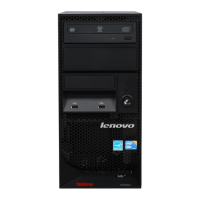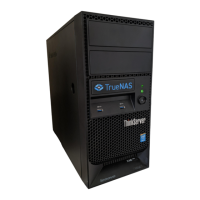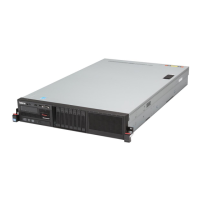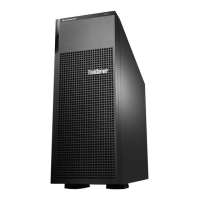•Forinformationaboutthesupportedexpansioncard,see“Systemboardcomponents”onpage45.
•Dependingonthemodel,yourservermightcomewithascrew-secured,non-hot-swappowersupply
assemblyoroneortwohot-swapredundantpowersupplies.
•Formoreinformationaboutthememorymodules,see“Memorymoduleinstallationrules”onpage94.
Thefollowingillustrationshowsthecomponentsofservermodelswithuptofour3.5-inchnon-hot-swap
harddiskdrives.
Figure14.Componentsofservermodelswithuptofour3.5-inchnon-hot-swapharddiskdrives
1IntelligentDiagnosticsModule(availableinsome
models)
9Frontsystemfan1
2Frontpanel
10Systemboardbattery
3Opticaldrivebay2(withanopticaldriveinstalled
insomemodels)
11Expansioncard(variesbymodel)
4Opticaldrivebay1(withanopticaldriveinstalled)
12Heatsinkandfanassembly
5Harddiskdrivebay3
13Systemboard
6Harddiskdrivebay2
14Rearsystemfan
7Harddiskdrivebay115Powersupply
8Harddiskdrivebay0
16Fourmemoryslots(installedmemorymodulesvaryby
model)
•Formoreinformationabout1to4,see“Frontviewoftheserver”onpage15.
Note:TheIntelligentDiagnosticsModule1isonlyavailableinsomemodelsandtheIDMpanelalso
variesbymodel.See“IntelligentDiagnosticsModule”onpage18.
Chapter3.Productoverview31

